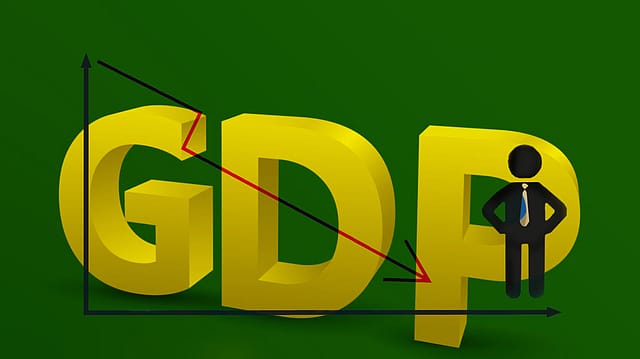Mystery in GDP data! Why is Fixed Capital Asset formation receding?
ADVERTISEMENT

The third quarter gross domestic product (GDP) growth was a surprise on the downside as it remained below expectations. Weighed down by construction and manufacturing, the October–December quarter GDP at 5.4% was down sequentially from 8.5% growth in the July–September quarter of the current financial year.
But beyond the subdued headline number, negative construction, flat manufacturing, subdued agriculture and financial and real estate services in the third quarter of the current financial year, yet another factor pointing to the growing pain in the Indian economy pertains to the sequential slip in the gross fixed capital formation (GFCF), which is essentially a measure of the increase in the fixed productive assets in the economy. A slowing trend in the GFCF has wider ramifications on the future productivity of the economy.
According to the Q3 FY22 GDP data released by the National Statistics Organisation (NSO) on February 28, GFCF has dipped sequentially to ₹11,50,761 crore from ₹11,97,610 crore in the second quarter of the current financial year. It is marginally higher than ₹11,28,117 crore in Q3, FY21 and almost flat when compared with the third quarter of FY20 – the pre-pandemic period essentially at ₹11,35,023 crore.
So, is the economy losing out on investments, despite the massive capex being doled out budget after budget after budget to stoke the much needed growth? Experts say that there may be a need to look at the numbers even more minutely as investment in the economy is the sum of GFCF, change in stocks and valuables. Economist N R Bhanumurthy, vice-chancellor, Dr B R Ambedkar School of Economics, points out that on the macro scale there is a general decline in the overall economy in the last few years, having a bearing naturally on the fixed capital assets too.
January 2026
Netflix, which has been in India for a decade, has successfully struck a balance between high-class premium content and pricing that attracts a range of customers. Find out how the U.S. streaming giant evolved in India, plus an exclusive interview with CEO Ted Sarandos. Also read about the Best Investments for 2026, and how rising growth and easing inflation will come in handy for finance minister Nirmala Sitharaman as she prepares Budget 2026.
On the dip in fixed capital formation Bhanumurthy says, "GFCF is just one part of investments. We need to see it in the context of the change in stocks and valuables," said Bhanumurthy. Total investment as a sum of the three in the third quarter comes to ₹12,73,676 crore down from ₹13,87,749 crore in the second quarter, which Bhanumurthy blames on the seasonality. Total investment in Q3 is higher than the first quarter's total investment figure of ₹11,30,897 crore.
In fact in an interesting trend while the gross fixed capital formation in the economy remained almost flat in the Q3 of the current financial year at ₹11,50,761 compared with ₹11,35,023 crore in Q3, FY20, the investment in valuables has more than doubled from ₹37,119 crore to ₹78,149 crore. "This means that investment is shifting from the real sector to the financial sector," Bhanumurthy says.
That said the concern remains as the share of GFCF in the GDP too is falling. The government data reveals that as a percentage of the GDP, gross fixed capital formation has dipped to 30.1% in the third quarter of the fiscal year compared with 33.3% in the second quarter and 32.7% in the first quarter. This is despite the fact that the first quarter was marred by the killer second wave of the Covid-19 pandemic.
Interestingly, the second advance estimate of the national income released for FY22, pegs the GFCF at ₹47,32,872 crore. For that number to be achieved, the fixed capital formation in the economy will have to be to the tune of ₹13,20,736 crore in the fourth quarter – the ongoing quarter of the current financial year. This is higher than the average achieved in all the quarters of the current financial year.
